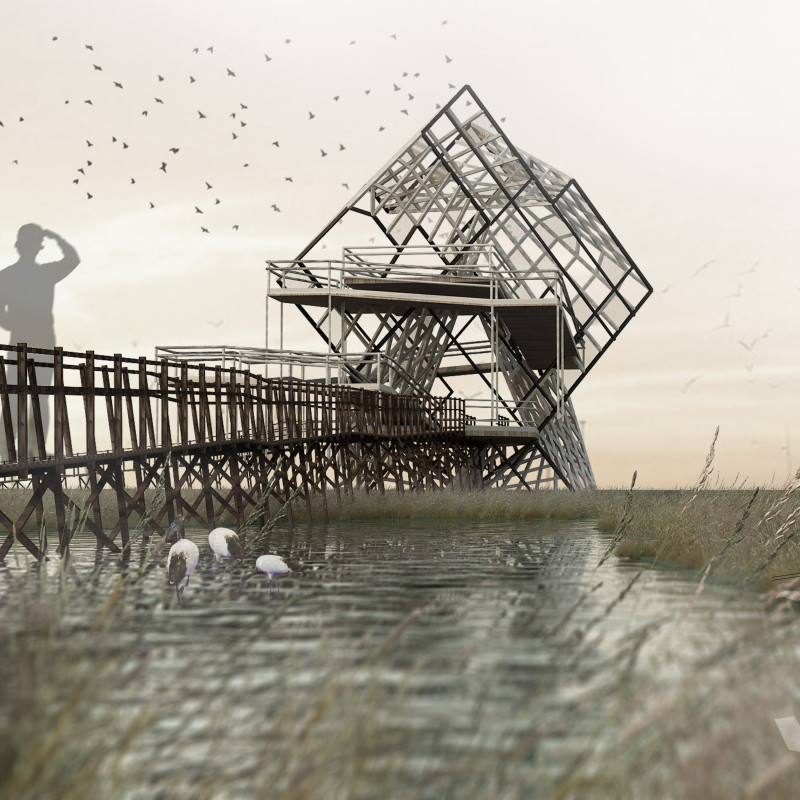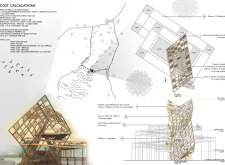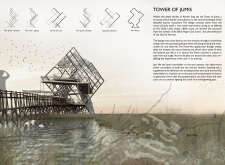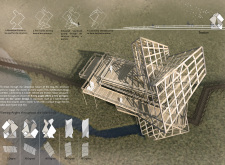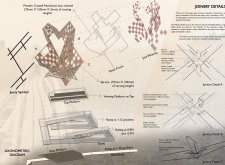5 key facts about this project
The Tower of Jumis is located in Kemeri bog, a tranquil landscape that allows for a harmonious connection between nature and architecture. This structure serves as a tribute to the Baltic Pagan God "Jumis," who represents the idea of the harvest. The design concept is focused on blending with the natural surroundings, providing a unique experience for visitors. It invites them to engage with the environment while reflecting the local heritage and history.
Materiality
The materials chosen for the tower play a key role in its overall integrity and appearance. Spruce wood is used in dimensions of 75mm by 150mm for the primary structural elements. Alongside this, powder coated aluminum box channels measuring 75mm by 150mm and 2mm thick form the frame, offering strength and durability. Jute weaving adds another layer to the structure, providing both support and visual interest.
Structural Design
The tower has a frame-like appearance that ensures stability while allowing for clear views of the surrounding area. The design incorporates open and enclosed spaces, which encourages different interactions by visitors. An elevated boardwalk runs through the structure, acting as a pathway that connects people directly to the landscape, enriching their experience of the setting.
Accessibility and User Experience
The design also emphasizes accessibility with ramps set at gradients of 1:12 and 1:20, making movement throughout the structure easy for everyone. The railings are designed at heights of 0.9m and 0.7m, ensuring safety without detracting from the overall design. These features make the tower an inviting place for exploration and contemplation.
Design Details
Joinery techniques used in the tower reflect a focus on precision and flexibility. Metal plates at the joints allow for adjustments on-site, simplifying assembly and accommodating different angles. This attention to detail contributes to the structural strength while enhancing the overall look of the tower, resulting in a design that is both practical and thoughtful within its setting.


